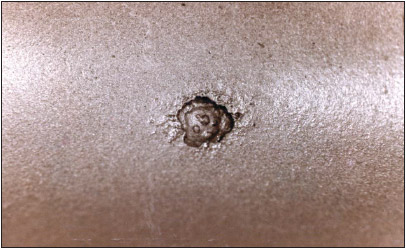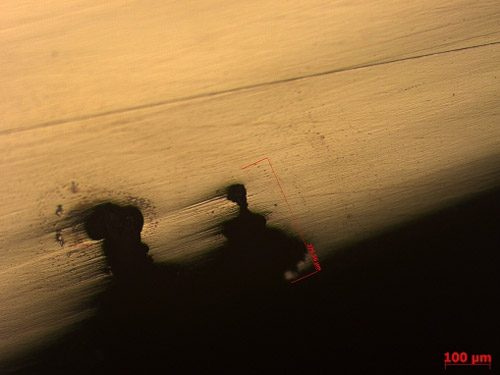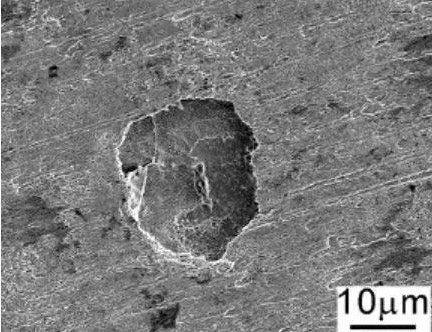01.Hazards of Microbial Corrosion
Reaction of microbial corrosion:
Cathodic depolarization: SO42-+8H→S2-+4H2O
The most serious microbial species that corrode coiled tubing materials is sulfate-reducing bacteria (SRB). Under the hypoxic conditions, SRB can produce cathodic depolarization, make the SO42- revert to H2S and obtain energy by itself. SRB in the pumped water can be introduced into the coiled tubing, where SRB can grow and metabolize, causing corrosion such as pitting and plugging of the coiled tubing to fail.
The Microbial Corrosion of Coiled Tubing
During the coiled tubing operations, the pumped aqueous solutions include various microorganisms. The life activity of microorganism causes or promotes the corrosion of the materials, leading to the failure of the Coiled Tubing. The picture shown as below is about coiled tubing’s pitting corrosion, with corrosion depth about 2mm and corrosion width about 0.1mm.

Figure 1 Macro-Photo of Microbial Pitting Corrosion

Figure 2 Micro-Photo of Microbial Pitting Corrosion

Figure 3 SEM Image of Microbial Pitting Corrosion
03 Jason’s Suggestions for Detection and Preventive Measures for Microbial Corrosion
Samples of coiled tubing failure caused by pitting and plugging due to microbial corrosion during operation were analyzed, and SRB rapid test was performed, including bacterial test of tubing cleaning fluid. Please refer to photos as below:

Preventive Measures:
· Control the source of SRB corrosion by killing SRB bacteria injected into oil well water.
· Corrosion inhibitors and fungicides can kill or control the growth of SRB. However, if a single agent is used for a long time, the bacteria will develop obvious drug resistance, making the agent ineffective;
· Utilizing the symbiotic and competitive resistance between microorganisms to prevent the corrosion of metals by microorganisms. For example, some bacteria can produce substances similar to antibiotics to kill the SRB directly , or introduce other microorganisms to compete with the existing SRB for nutrients, removing sulfides and reducing the amount of the SRB;
· Changing the medium environment: Changing the conditions by utilizing the tolerance range of SRB to PH value, temperature, oxygen resistance and salinity. For example, adjusting the PH value below 4, SRB will generally stop growing; injecting high salinity water and it will change the osmotic pressure to inhibit SRB growth; Periodically injecting hot water higher than 60 ℃, or prolonged oxygen can also inhibit the growth of SRB.



